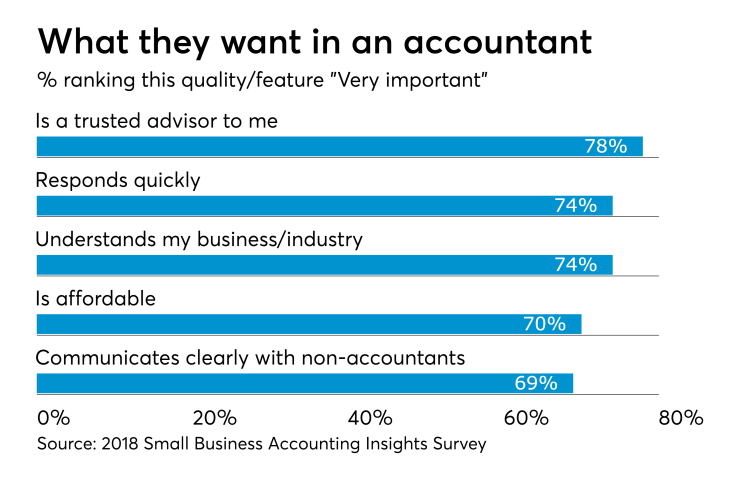Of all the niches that accountants work with, nonprofit organizations present some of the most unique challenges -- but they also have some of the strongest relationships with their outside advisors.
Among the industry sectors covered as part of Accounting Today’s
Nonprofits have an Affinity Index of 1.27, well above the average of 1.00; what’s more, the overwhelming majority of those who worked with accountants were happy with the experience -- 66 percent reported being “very satisfied” and 22 percent were “somewhat satisfied” with their CPA.
That doesn’t mean they are a slam-dunk for accountants; among other things, the services they require are very different from those sought by the majority of other business clients, and with 66 percent of them already working with accountants, the market is somewhat saturated for basic services.

The state of the sector
All industries have their specific needs, but nonprofits really stand out as a unique niche.
To start, “nonprofit” covers almost as wide a range of types of organizations as “for-profit” -- everything from churches, educational institutions, museums and hospitals, to service organizations, charities, think tanks and NGOs. Each of those comes with its own specific concerns, issues and challenges, requiring deep knowledge on the part of accountants who hope to serve them.
That said, most nonprofits face a core set of shared challenges:
- Complicated accounting that is unlike anything else, including grant-tracking and working with restricted funds;
- Perpetual difficulties in fundraising, and ever-increasing demands from donors in terms of reporting and accountability;
- Relatively inexperienced staff and board members in the form of volunteers (particularly at smaller nonprofits);
- Increasingly complex reporting requirements; and,
- Ongoing consolidation in the field.
On average, the small nonprofits in Accounting Today’s survey were in decent financial shape. Only 25 percent reported being profitable in 2017, against 69 percent of all the small businesses in the survey -- but then, “profitability” is a slippery concept for nonprofit entities. More meanginfully, over half (52 percent) report breaking even, against 18 percent of small businesses, and only 4 percent reported operating at a loss, against 6 percent of small businesses overall.
They were less likely to report having increased their revenue in the previous 12 months (35 percent of nonprofits, versus 52 percent of small businesses overall), though 48 percent reported having held revenues steady, so that the percent reporting decreasing revenues was not far off the average (17 percent versus 13 percent).
And they’re fairly positive about the coming year, with 58 percent expecting growing revenues (against 67 percent overall), and 35 percent expecting to add more employees, which is higher than the 27 percent of small businesses overall.
Two final points about nonprofits: They tend to be older than the average small business. More than four-fifths (81 percent) are ore than 10 years old, against only 45 percent of small businesses overall; and they skew a little larger, with 65 percent have between one and 10 full-time employees (versus 73 percent of overall small businesses).
The opportunity for accountants
The complexity of their reporting, and the way donor demands have been growing help explain why nonprofits have such a high affinity for their accountants.
Their AII is 1.27, one of the highest of the industries surveyed, which helped boost their Composite Score to 1.01, since they had a relatively low Opportunity Score, at 0.75. (For all three numbers 1.0 is average for all small businesses.)
A low Opportunity Score doesn’t reflect a lack of interest in accounting firm services; as noted above, nonprofits are highly engaged and highly satisfied with their accountants. Instead, it’s a result of above-average interest in core offerings like bookkeeping, tax planning, tax services, and payroll, which means that it can be harder to find new prospects.
While the field hasn’t hit saturation levels yet on those services, it’s closer than many of the other sectors, and the strongest opportunities for accountants may come from educating current clients about the value of some of their other services. For instance, literally none of the respondents were interested in IT services or technology consulting, despite the fact that many nonprofits reported needing help in these areas.
They were more likely than the average small business to have had cash flow problems in the last 12 months (40 percent versus 32 percent), and to have needed capital (33 percent versus 21 percent). At the same time, they were much more likely to have consulted an accountant or CPA about those issues than the average small business (42 percent versus 34 percent).
What’s more, this is a field that uses and values their most trusted advisors: Two-thirds of them (67 percent) reported having received services from their CPA or accountant in 2018, against just half of small businesses overall, and, as noted above, they were very satisfied with the results.
KEY TAKEAWAYS: SMALL NONPROFIT ORGANIZATIONS
Affinity Index: 1.27
Opportunity Score: 0.75
Composite Score: 1.01
Nonprofits both need and strongly value the services they get from accountants, but serving them requires specific knowledge of nonprofit accounting, and of the issues and challenges facing each type of NFP organization. Given the relatively high percentage of nonprofits who are currently using accounting firms, the greatest potential for growth may lie with current clients, but that will require keeping their keen eye for affordable pricing in mind.






